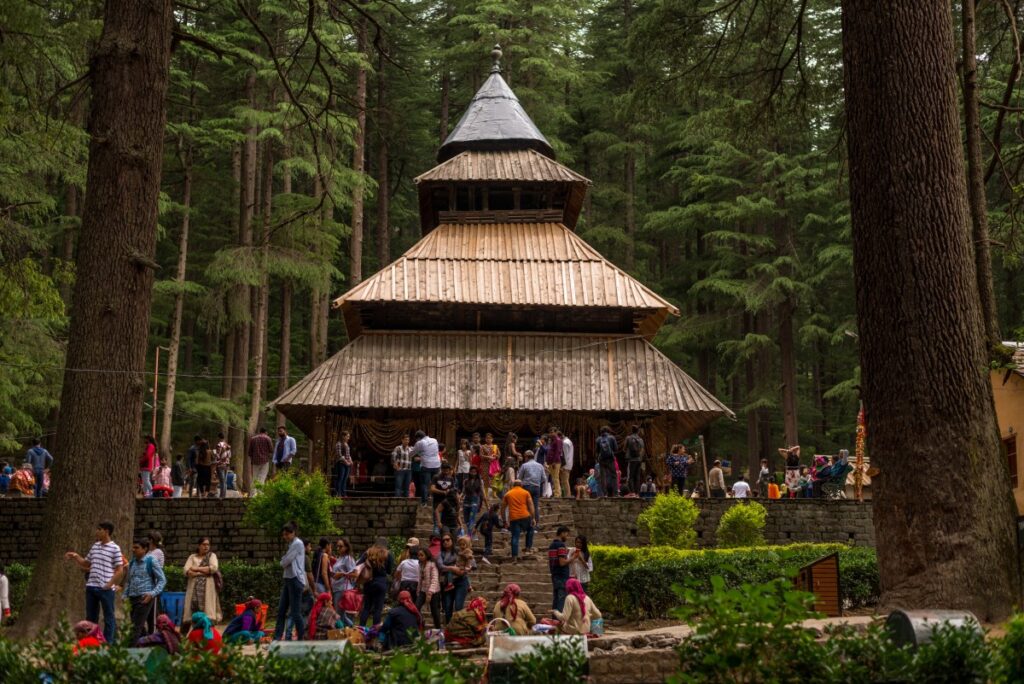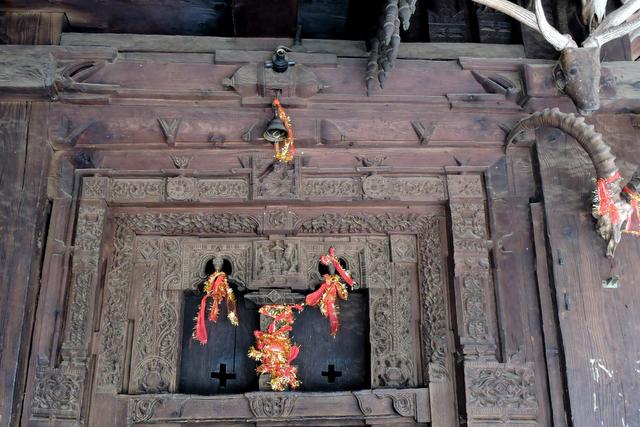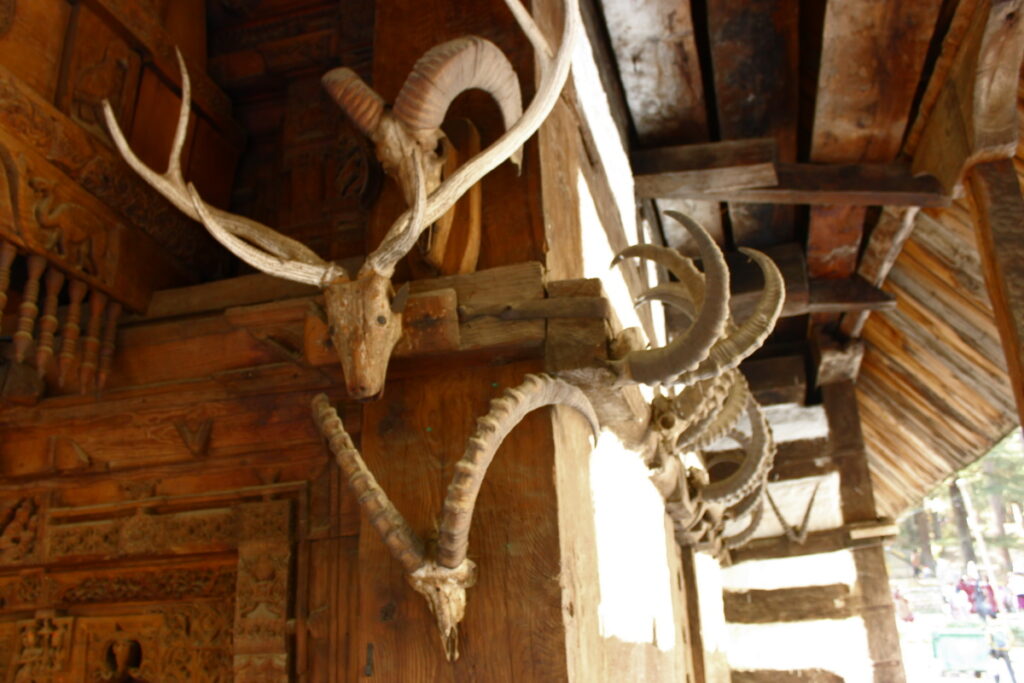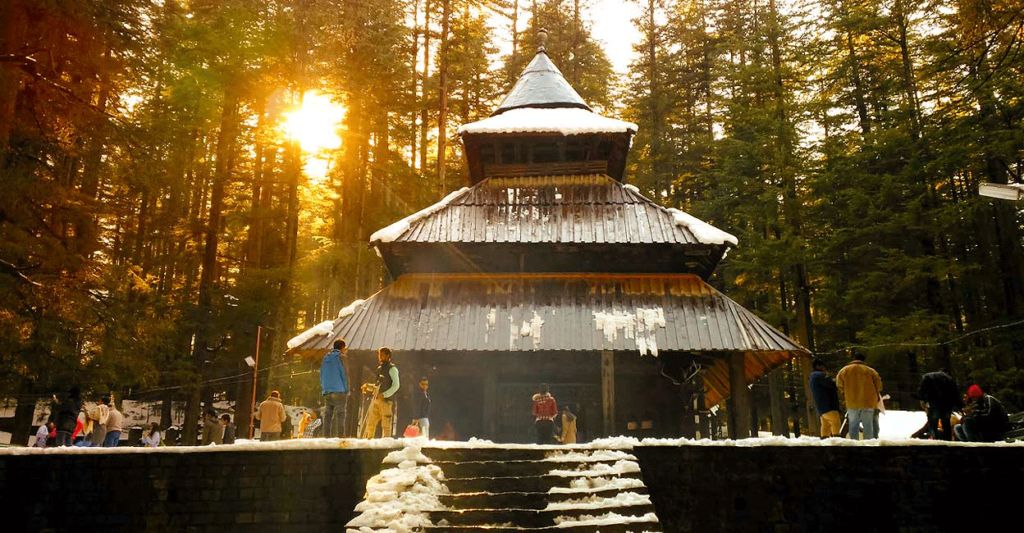Nestled amidst the towering deodar forests of Manali, the Hadimba Temple, also known as Hidimba Devi Temple, stands as an architectural and spiritual marvel. With its unique wooden construction, deep-rooted mythological significance, and breathtaking surroundings, this temple is not just a place of worship but also a popular tourist attraction. Whether you are a history enthusiast, a nature lover, or a spiritual seeker, the Hadimba Temple offers an experience that beautifully blends mythology, tradition, and natural beauty.

The Hadimba Temple is dedicated to Hidimba Devi, a significant figure in the epic Mahabharata. According to legend, Hidimba was a demoness (rakshasi) who lived in the dense forests of Himachal Pradesh. She vowed to marry only the man who could defeat her powerful brother, Hidimb. During the Pandavas’ exile, Bhima, the strongest of the five brothers, challenged Hidimb to a battle and emerged victorious. True to her word, Hidimba married Bhima, and their union gave birth to Ghatotkacha, a mighty warrior who played a crucial role in the Kurukshetra War.
After Bhima left, Hidimba devoted herself to meditation and later attained divinity. The Hadimba Temple was built in 1553 by Raja Bahadur Singh to honor her spiritual legacy. Over centuries, it has remained an important pilgrimage site and a cultural landmark in Manali.
Architectural Splendor
One of the most striking aspects of the Hadimba Temple is its distinctive wooden architecture, setting it apart from other temples in the region. The structure is a pagoda-style shrine with a tiered roof covered in wooden shingles. The temple’s four-tiered roof resembles a pagoda, and its intricate wooden carvings depict deities, animals, and mythological scenes.
The entrance of the temple is adorned with exquisite carvings of celestial figures and natural motifs, reflecting the traditional Himachali architectural style. Unlike typical Hindu temples that house an idol, the sanctum of the Hadimba Temple enshrines a footprint on a rock, believed to be that of Hidimba Devi. The temple’s rustic charm, combined with the serene forest surroundings, makes it a mesmerizing sight for visitors.
The Spiritual and Cultural Essence

Hadimba Devi is widely revered by the locals, and the temple is an integral part of Manali’s religious and cultural fabric. The deity is believed to be a powerful goddess who protects the valley and blesses devotees with prosperity and well-being.
https://wandervistas.in/blogs/One of the most significant events held at the temple is the annual Hadimba Devi Fair, celebrated during the Hindu festival of Navratri. Devotees from different parts of Himachal Pradesh gather to seek the goddess’s blessings. The fair features vibrant processions, traditional dances, and rituals, making it a grand cultural spectacle.
Apart from religious ceremonies, the temple also holds importance in local weddings. Many couples seek the goddess’s blessings before starting their new journey together, believing that she grants happiness and harmony.
Scenic Beauty and Surroundings
The Hadimba Temple is not just a spiritual retreat but also a paradise for nature lovers and photographers. Located amidst dense cedar forests, the temple exudes a tranquil charm, making it a perfect escape from the hustle and bustle of daily life.
Visitors can take a peaceful stroll through the towering deodar trees, enjoying the crisp mountain air and the soothing sounds of nature. In winters, the temple and its surroundings are blanketed in snow, creating a mystical and enchanting landscape. The area around the temple is also home to a variety of local flora and fauna, adding to its natural allure.
Just a short walk from the temple is the Ghatotkacha Tree Temple, dedicated to Hidimba’s son. This sacred site is marked by a giant tree and holds great significance among the locals.
Things to Do Near Hadimba Temple

Manali offers a plethora of attractions near the Hadimba Temple, making it a must-visit destination. Some of the popular places to explore include:
- Manu Temple: Dedicated to Sage Manu, this temple is located about 3 km from Hadimba Temple and is known for its spiritual ambiance.
- Old Manali: A charming locality known for its vibrant cafes, rustic guesthouses, and stunning views of the Himalayas.
- Solang Valley: A paradise for adventure enthusiasts, offering activities like paragliding, skiing, and zorbing.
- Mall Road: The bustling heart of Manali, filled with shops selling local handicrafts, souvenirs, and delicious Himachali cuisine.
Best Time to Visit Hadimba Temple
The Hadimba Temple is open throughout the year, but the best time to visit depends on your preference:
- Summer (March to June): Ideal for sightseeing and enjoying pleasant weather.
- Monsoon (July to September): The lush greenery enhances the temple’s beauty, but landslides can be a concern.
- Winter (October to February): The snow-covered temple offers a breathtakingly serene experience, perfect for those who love winter landscapes.
How to Reach Hadimba Temple
The Hadimba Temple is easily accessible from Manali town. Here’s how you can reach it:
- By Road: Manali is well-connected by road, and visitors can take a taxi or walk to the temple from Mall Road, which is about 2 km away.
- By Air: The nearest airport is Bhuntar Airport, approximately 50 km from Manali. From there, taxis and buses are available.
- By Rail: The nearest railway station is Joginder Nagar, around 165 km from Manali. From there, buses and taxis can take you to the town.
Final Thoughts
The Hadimba Temple is more than just a historical and religious site; it is a place where mythology, architecture, and nature converge to create a magical experience. Whether you seek spiritual solace, architectural marvels, or just the peace of the Himalayas, this temple offers something for everyone. A visit to Manali is incomplete without exploring the enchanting aura of the Hadimba Temple—where legends live, traditions thrive, and nature welcomes you with open arms.

